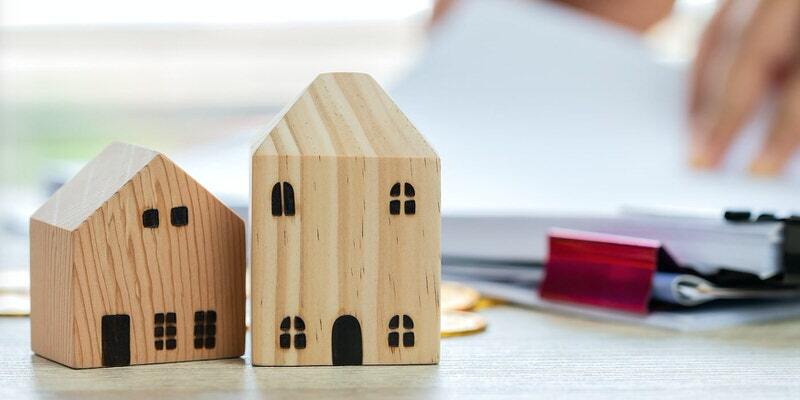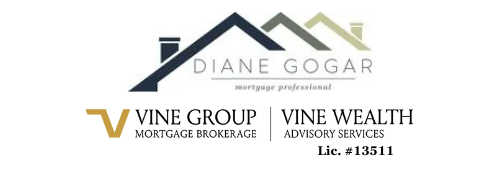Access Your Home Equity! COVID-19
Diane Gogar • May 13, 2020

As the initial shock of living through a global pandemic wears off and restrictions start to loosen, it would seem that Canada is en route to de-COVID soon (time will tell).
If you’ve been waiting until things flatten out before making any significant financial decisions, now might be a good to time start working through your options. If those options include accessing the equity from your home; for whatever reason, here are some of the things to consider moving forward.
Expect heightened scrutiny
Due to COVID-19, lenders are currently dealing with a tremendous amount of uncertainty, as many Canadians are still out of work and deferring mortgage payments, appraisal values are in question, and sales in the housing market have slowed down considerably. And for most lenders, the best way to deal with uncertainty is by being cautious.
Moving forward, you can expect heightened scrutiny on any mortgage transaction. Qualification standards are no longer hard and fast rules, but rather guidelines. So although you may qualify to access up to 80% of your property’s value based on the government regulations, depending on the lender, they might only be comfortable lending to 75% or less.
Part of this heightened scrutiny will also include a more in-depth assessment of your employment. Lenders want to see evidence of stable income to ensure you have the means to make your new mortgage payments.
So if you’ve experienced any type of job loss or reduced hours, if you have deferred your mortgage payments, or if you’ve accessed any government relief programs, qualifying to refinance your mortgage won’t be a walk in the park.
55+? Consider a reverse mortgage
For those Canadians 55+ who have significant home equity, a reverse mortgage is worth serious consideration. Qualifying for a reverse mortgage is way less complicated compared to traditional mortgage financing as there are no income or credit requirements. Any money borrowed is tax-free and does not impact CPP or OAS qualifications.
Instead of making regular payments to reduce the total balance outstanding, the interest is added to the total mortgage amount and increases each year.
Accessing home equity, without having to make regular payments, has proven to be the ultimate in cash flow management and a useful tool in helping older Canadians live their desired lifestyle.
You need a plan
Despite the uncertainty, mortgage lenders are still in the business of lending money. It is still possible to refinance your mortgage and access your home equity, but if a lender assesses you’re using your home as a personal ATM, it’s probably not going to work out.
So, the best plan of action is to have a plan of action. That starts with working with an independent mortgage professional who understands the lending landscape and can provide you with mortgage options at many different lenders.
If you have any questions, please don’t hesitate to contact me anytime, together we can look at all your options and figure out a plan going forward.

Thinking About Selling Your Home? Start With These 3 Key Questions Selling your home is a major move—emotionally, financially, and logistically. Whether you're upsizing, downsizing, relocating, or just ready for a change, there are a few essential questions you should have answers to before you list that "For Sale" sign. 1. How Will I Get My Home Sale-Ready? Before your property hits the market, you’ll want to make sure it puts its best foot forward. That starts with understanding its current market value—and ends with a plan to maximize its appeal. A real estate professional can walk you through what similar homes in your area have sold for and help tailor a prep plan that aligns with current market conditions. Here are some things you might want to consider: Decluttering and removing personal items Minor touch-ups or repairs Fresh paint inside (and maybe outside too) Updated lighting or fixtures Professional staging Landscaping or exterior cleanup High-quality photos and possibly a virtual tour These aren’t must-dos, but smart investments here can often translate to a higher sale price and faster sale. 2. What Will It Actually Cost to Sell? It’s easy to look at the selling price and subtract your mortgage balance—but the real math is more nuanced. Here's a breakdown of the typical costs involved in selling a home: Real estate agent commissions (plus GST/HST) Legal fees Mortgage discharge fees (and possibly a penalty) Utility and property tax adjustments Moving expenses and/or storage costs That mortgage penalty can be especially tricky—it can sometimes be thousands of dollars, depending on your lender and how much time is left in your term. Not sure what it might cost you? I can help you estimate it. 3. What’s My Plan After the Sale? Knowing your next step is just as important as selling your current home. If you're buying again, don’t assume you’ll automatically qualify for a new mortgage just because you’ve had one before. Lending rules change, and so might your financial situation. Before you sell, talk to a mortgage professional to find out what you’re pre-approved for and what options are available. If you're planning to rent or relocate temporarily, think about timelines, storage, and transition costs. Clarity and preparation go a long way. The best way to reduce stress and make confident decisions is to work with professionals you trust—and ask all the questions you need. If you’re thinking about selling and want help mapping out your next steps, I’d be happy to chat anytime. Let’s make a smart plan, together.

As patios wind down and pumpkin spice ramps up, fall is the perfect reset for your home—and your homeowner game plan. These quick wins boost comfort, curb appeal, and efficiency now, and set you up for a low-stress winter (and a strong spring market). 1) Safety & “silent leak” checks (Weekend-ready) Clean gutters & downspouts. Add leaf guards where trees overhang. Roof scan. Look for lifted shingles, cracked flashings, or moss. Seal the shell. Re-caulk window/door trim; replace weatherstripping. Test alarms. New batteries for smoke/CO detectors; add one near bedrooms. Why it matters: Prevent water intrusion and heat loss before storms roll in. 2) Heat smarter, not harder Furnace/boiler tune-up and filter change. Smart thermostat with schedules and geofencing. Draft hunt. Foam gaskets behind outlets, door sweeps on exterior doors. ROI tip: Efficiency upgrades lower monthly bills and can improve lender ratios if you’re eyeing a refinance later. 3) Fall-proof your yard (so spring you says “thanks”) Aerate + overseed + fall fertilize for thicker turf next year. Trim trees/shrubs away from siding and power lines. Mulch perennials and plant spring bulbs now. Shut off/bleed exterior taps and store hoses to avoid burst pipes. 4) Extend outdoor season (cozy edition) Portable fire pit or propane heater + layered blankets. Path/step lighting for darker evenings (solar or low-voltage). Weather-resistant storage for cushions/tools to preserve value. Neighborhood curb appeal: Warm lighting and tidy beds make a big first impression if you list in shoulder season. 5) Water management = winter peace of mind Re-grade low spots and add downspout extensions (2–3+ metres). Check sump pump (and backup). Look for efflorescence or damp corners in the basement. 6) Mini-renos that punch above their weight Entry/mudroom upgrade: hooks, bench, boot trays, closed storage. Laundry room tune-up: counter over machines, sorting bins, task lighting. Kitchen refresh: new hardware, tap, and under-cabinet lighting in one afternoon. Budget guide: Many of these land under a micro-reno budget—perfect for a modest line of credit. 7) Indoor air quality tune-up Deep clean vents and dryers (including the rigid duct). Add door mats (exterior + interior) to catch grit/salt. Houseplants or HEPA purifier for closed-window months. Fast Timeline (pin this to the fridge) Late August–September Gutters/downspouts, roof/caulking, HVAC service, lawn care, plant bulbs, exterior tap shut-off plan, path lighting. October Weatherstripping/sweeps, fire pit setup, organize mudroom/garage, test alarms, sump check, downspout extensions, dryer vent cleaning. Financing smarter: make your mortgage work for your home Annual mortgage check-in. As rates, income, and goals evolve, a quick review can free up cash flow or open options for a small fall project budget. HELOC vs. top-up refinance. For bite-size projects, a HELOC can be flexible. For bigger renos you plan to pay down, a top-up refi might make more sense. Bundle & prioritize. Knock out the high-impact, low-cost items first (air sealing, safety, water management) before the cosmetic upgrades. Not sure which route fits your fall plans? We’ll run the numbers and map the best financing path for your specific budget and goals. Quick Checklist (copy/paste) ☐ Clean gutters/downspouts; add guards ☐ Roof & flashing visual check ☐ Re-caulk, weatherstrip, add door sweeps ☐ HVAC service + new filter ☐ Aerate/overseed/fertilize; trim trees; plant bulbs ☐ Path & entry lighting ☐ Drain/bleed outdoor taps; store hoses ☐ Downspout extensions; sump test ☐ Dryer vent cleaning ☐ Mudroom/garage organization ☐ Schedule mortgage review / discuss HELOC vs refi Ready to make fall your low-stress season? Book a quick fall mortgage check-up—15 minutes to see if a small credit line or a tweak to your current mortgage could cover your priority projects without straining cash flow.



